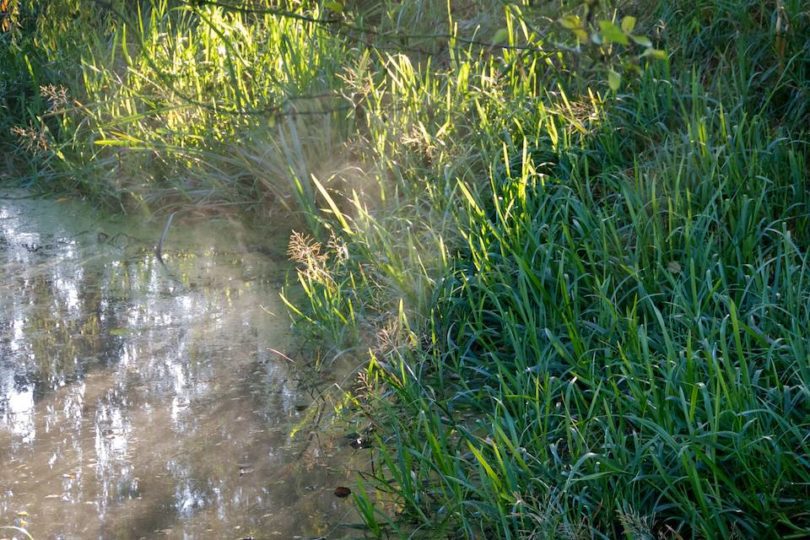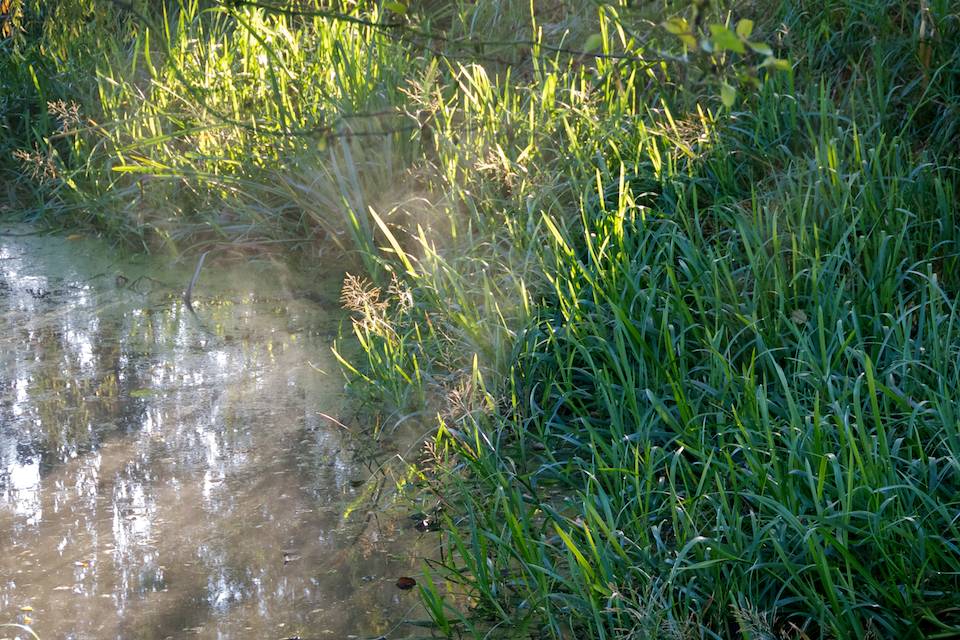Never once did it occur to me that, the gentle rolling green Oxfordshire countryside, could hide such a malicious horror. The exact location of the appalling crime is a mystery, but somewhere, either in the field, or in the garden, I was repeatedly stung, by a small homicidal black fly, a.k.a., the Blanford Fly. The pleasure of actually catching sight of the little critter has yet eluded me, but the substantially swollen evidence left in its wake, is unmistakable.
The Blanford fly (Similium Posticatum) is a very small black fly, just 2-3mm long and tends to fly in close proximimity to the ground. Hence, explaining its stealth existence. Prevalence around the village of Blandford Forum in Dorset, resulted in its undeservedly smart name. To date, occurrence in the UK is only patchily distributed in the area running from East Anglia through Oxfordshire to Dorset. Though, there is evidence of further spreading, where bites have been reported as far as Bournemouth. Moreover, it seems that the cunning Blanford fly is no longer simply a countryside occurrence, as the flies are now also successfully reproducing in city areas. Their urban sprawl is reportedly due to the ever growing popularity of garden water features. Probably much to the credit of the Ground Force Decking Team and their queen of water features; Charlie Dimmock.
Just as it did to yours truly, the bite of the Blanford fly can cause severe reactions in people. The bites often occur on the legs and are very painful indeed. The symptoms will depend on one’s sensitivity to insect bites, but generally include swelling (oedema), blistering, high temperature (38C+) and joint pain. Since learning of its existence, I was compelled to find out more and consequently prevent future bites for both my family, as well as fellow gardeners. Until we actually identified the culprit, we always presumed that the horsefly was the guilty party and were therefore never looking out for this much smaller villain. Mind you, it pays to keep an eye out for the dreaded horseflies too…
We are now well into the so called ‘danger period’ of the Blanford fly. Almost exclusively in May and June, the flies are actively searching far and wide to relieve a poor punter of his/her precious blood. The recent hot weather does seem to have made them active earlier though. The bite goes mostly undetected though often leaving a spot of blood and immediate sore, itchy sensation. If you react to the bite as I do, one will consequently spend the rest of the week nursing terrible itching and a painfully large debilitating swelling. The males are harmless. It is Mrs Blanford fly, the true culprit, who is at this time, on the war path, seeking a meal of blood to assist in the production of her eggs. I will spare you the exact details of their reproductive cycle, but in short; (1) Eggs laid in June/July in the ground, normally along riverbanks (2) Eggs hatch the following February/March (3) New adult flies appear in May with nothing but sex and blood on the brain.


Don’t be put off gardening, or heading for a stroll in the lovely East Anglian, Dorset or Oxfordshire countryside, just take extra care in the coming two months. To reduce the chance of being bitten, one is probably best to wear trousers and keep ankles and feet covered. The recent hot spell encouraged yours truly to adorn her skimpy sandals, which proved irresistible, so wellies are probably the better choice. Blanford fly bites are more frequent in the middle of the day, as opposed to the early morning and evening activity of compatriot offenders; the mosquito, horsefly and midge. Avoid open areas in the garden, field, parkland, riverbanks in the middle of the day, particularly in hot weather. In addition, spray, spray and spray insect repellent all over. Steer clear of low garden furniture, and be on guard when working close to the ground. Always ensure one is covered up and exude nothing but copious wafts of eau de super repellent.
If unfortunately you have been bitten, clean the wound thoroughly and however irresistible, do not scratch. I am not of the medical profession, so one is best to seek proper medical advice. Though, having been bitten often and clearly very susceptible to insect bites, I know the routine. For personal treatment of my Blanford injury, a cure of anthistamine tablets, and application of both antihistamine cream as well as cream containing Crotamiton to stop the dreaded itching. Aspirin, paracetamol or neurofen for the pain. For the swelling, continued localised cold showers and/or cold compresses. And as per always, if symptoms persist a visit to the GP is advised.
For most the Blanford fly is a nothing but a pest, though with just a hint of ginger, the tables can turn. Some bright spark brought out an ale, named after the enfant terrible. According to the makers of Blandford Fly; Hall & Woodhouse, one of the active ingredients of ginger called zingibain could help reduce the fever and swelling inflicted by a Blanford fly. I have never tried this beer with its miracle Blanford fly bite curing properties, but there may be some truth in their marketing spiel. Zingibain is a proteolytic enzyme and anti-inflamatory, commonly used to relieve arthritis pain. Though to relieve the symptoms of a Blanford fly bite, I suppose one would need to down quite a few to obtain the right dosage. A prospect surely of much appeal to many, and especially to Hall & Woodhouse…..
